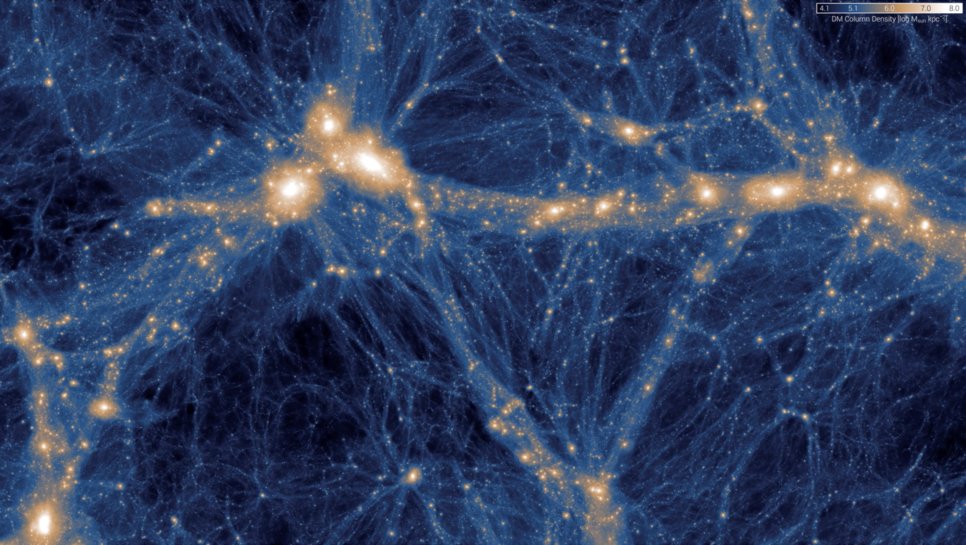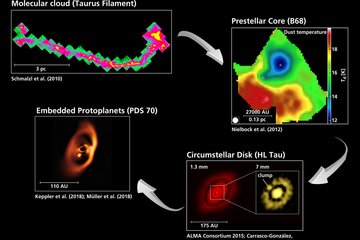Galaxies and Cosmology
Directly after the Big Bang, the universe was very simple and almost without structure. In the present universe, we see galaxies of various shapes and forms, aligned on an intricate weave of dark matter filaments. How did the universe become interesting? Those are the key questions guiding research in the Galaxies and Cosmology (GC) department at MPIA, headed by Hans-Walter Rix.

Somehow, the observed hierarchical order of our Universe must have arisen from the interplay between
- gravitational instability, driven by as yet undiscovered dark matter
- the expansion of the universe, accelerated by the presence of dark energy
- the concentration of ordinary (atomic) matter at the centers of dark matter halos, where galaxies form.
Numerous fundamental and practical questions are waiting for answers:
- When and how did galaxies form?
- Why do galaxies have big black holes at their centers? How do these black holes grow?
- How do galaxies turn gas into stars?
- How to map dark matter in and around galaxies, including our own Milky Way?
- What is there in the intergalactic space between galaxies?
Progress in astrophysics depends critically on the availability of ever better data. This, in turn, is the product of ever better new instrumentation. We develop and construct instruments for ground- and space-based observatory, with a particular focus on high-resolution and wide-field survey instrumentation in the near infrared.



